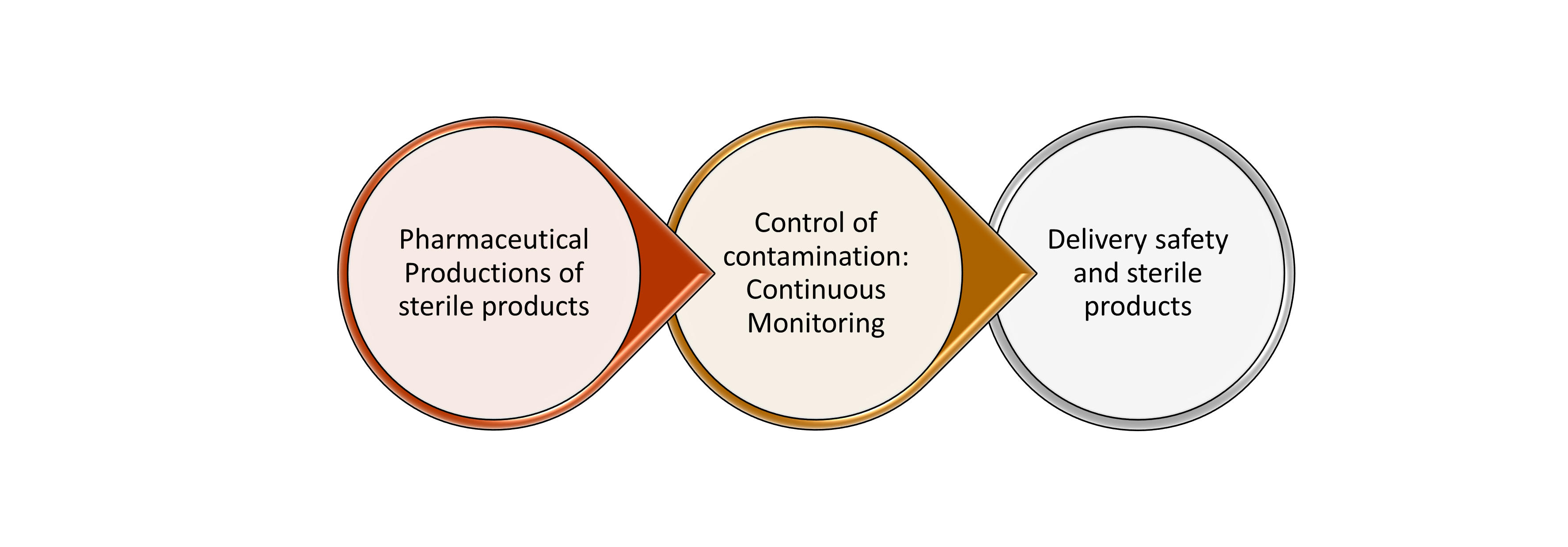Continuous monitoring helps ensure the sterility of clean manufacturing within the pharmaceutical industry. In the pharmaceutical field, one of the main objectives required by regulatory guidelines is to preserve the sterility of cleanrooms. Cleanrooms are controlled areas where contamination levels are monitored and managed to meet a defined cleanliness level. To reach this goal, it is important to ensure that each GMP requirement is respected over time.
Microbiologically controlled environments are used for many purposes within the pharmaceutical industry and are a very important tool in controlling the risk of contamination within aseptic processing environments. Products manufactured in such environments include bulk, sterile intermediates; pharmaceutical sterile products; excipients; and sometimes medical devices. For this reason, possible contamination of pharmaceutical products could have a dangerous impact on patients that are the final target of pharmaceutical products; the primary goal is to ensure the safety of the products and patients.
One of the principal ways to keep contamination under control is to monitor the environment for viable and nonviable particles and ensure that all contamination is within the GMP requirements.
Over the years, the approach suggested by the guidelines to monitor the aseptic process has been changed, and the Annex 1 revision that was published in August 2022 has the approach shifted once again, depicting that the best approach is the continuous monitoring approach. This means that the monitoring operation should be undertaken for the full duration of the critical processes [2].
As Annex 1 suggests about the monitoring of total particles:
9.16 For Grade A, particle monitoring should be undertaken for the full duration of critical processing, including equipment assembly.
9.17 The Grade A area should be monitored continuously (for particles ≥0.5 and ≥5 µm) and with a suitable sample flow rate (at least 28 liters (1 ft3) per minute) so that all interventions, transient events, and any system deterioration is captured. The system should frequently correlate each individual sample result with alert levels and action limits at such a frequency that any potential excursion can be identified and responded to in a timely manner. Alarms should be triggered if alert levels are exceeded. Procedures should define the actions to be taken in response to alarms including the consideration of additional microbial monitoring.
About the monitoring of viable particles:
9.24 Continuous viable air monitoring in Grade A (e.g., air sampling or settle plates) should be undertaken for the full duration of critical processing, including equipment (aseptic set-up) assembly and critical processing. A similar approach should be considered for Grade B cleanrooms based on the risk of impact on the aseptic processing. The monitoring should be performed in such a way that all interventions, transient events, and any system deterioration would be captured, and any risk caused by interventions of the monitoring operations is avoided.
As shown, section 9 of Annex 1 deals with the monitoring of production processes and classified environments regarding the counting of viable and nonviable particles. The focus of section 9 is routine monitoring and systems design, setting alarms, levels of action limits, and reviewing data trends [2].
Previously, Annex 1 only regulated and discussed the qualification and classification of cleanrooms. In the new Annex with the new approach, the focus is on cleanrooms and process monitoring. For this reason, the concept of continuous monitoring in aseptic environments has very high importance. 
Figure 1 Scheme of the main steps in the pharmaceutical industry
Overview
In this paper you will learn about
- Complete continuous monitoring of the process: continuously monitor the entire process at all critical stages starting with equipment setup.
- Sampling points determined by a Risk Assessment: it is important to conduct a proper Risk Assessment to identify the sampling points of viable and nonviable counters.
- Provide concrete and effective data: the purpose of continuous monitoring is to provide concrete and effective data reducing the risk of false positive results in terms of data quality and production effectiveness
- Monitoring must never interfere with the process: continuous monitoring reduces human intervention and therefore reduces the risk of contamination.





